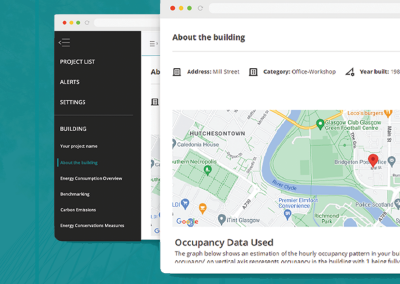Three myths about data estimation for GRESB and decarbonization planning (the fourth will shock you)

Written by Parag Rastogi,
Dec 14, 2023
The role of data, coverage, and estimation in decarbonizing real estate
Data is the foundation of transparency and action towards decarbonization. Without an accurate assessment of how much energy a building consumes — where, when, and for what — planning capital projects for decarbonization will yield wasteful, misdirected expense and effort. However obvious this statement may seem, our experience at arbnco has revealed that most property owners and managers on the leading edge of the transition to carbon-free operations struggle with patchy data availability, poor data quality, and inefficient manual data management processes. The bad news is that these are ubiquitous issues, and it is easy to get discouraged, even cynical, about improving data coverage and quality. The good news is that real world organizations have faced these challenges and arrived at a better place. We believe that turning this corner requires, in part, some data coverage myth busting. A discussion about data coverage may never be “fun”, but there are more reasons for optimistic than most people believe.
Before we dive into the article, let’s get a few definitions out of the way. This article is primarily about Data Coverage. In the GRESB framework, coverage implies one of two things:
● Spatial coverage — portion of one building, or fraction of all buildings in a portfolio for which data is available;
● Temporal coverage — fraction of time in a given year for which data is available.
Remember that both matter for your GRESB score. Finally, we will use the words “asset” and “building” interchangeably here. An asset can sometimes include multiple separate buildings on a single site, e.g., a retail park, but for the purposes of this article, this distinction is irrelevant.
(Sorry, clickbait headlines work, and this article is part of the problem)
Myth 1: The data just isn’t there
Oh it’s there, somewhere…
If owners, occupiers, and operators do not know how energy is consumed in their buildings, large scale decarbonization of the built environment is unlikely to be efficient or rapid. While one can have an asset upgrade and maintenance plan without energy analytics, what will be missed is a holistic, real-world view on how the performance of one or more buildings can be improved as fast as possible towards an ambitious goal such as net zero or 24/7 carbon-free operation.
Yet, the reality is that the data is there, if you invest in getting to it.
We are long past holding our breath for an era where energy is “too cheap to meter” or waiting for the grid to reliably provide 24/7 carbon-free energy for all. The increasing cost of energy has led to slow, but painful, increases in transparency. However, this financial incentive to measure consumption does not imply that the data is easy to access. The data could be locked away in any of a variety of systems and databases: a utility’s prehistoric repository of bills and meter readings, a building management system released about the same time as The Beatles’ first album* , in a shelf full of paper bills whose format changes monthly, or even in a nicely organized spreadsheet with your landlord (or tenant) who won’t share it. Numerous small variations in billing, units, and reporting across utility operators create unnecessary busy work for bright (and expensive) analysts just to bring the data to one screen, instead of being free to apply themselves to higher value work such as decarbonization planning.
As we have built more connectors and tools to utilities and other data providers at arbnco, we have found that automation and clever algorithms are of substantial benefit. They cannot (yet) entirely replace the need for a person to check that meters and buildings are properly matched, but they can make it much easier and more cost-effective. Sometimes, we find that data are not shared intentionally or due to dysfunction in the owner-tenant relationship, but, more often than not, it is a case of too much effort to achieve an outcome that feels insubstantial. This inability to get to the data is often mundane and familiar: a complex jumble of authorizations, disparate databases and spreadsheets, and the absence of a stable process for collection, aggregation, and interpretation.
We have spent a lot of time understanding these issues. We have unscrambled these pathways into repeatable units. Yes, it can be like untangling a drawer full of power cords. It doesn’t have to stay that way. We have created consent management modules and a uniform experience of data from different sources. There is no magical cure for all the problems between tenants, owners, and managers. However, we can use automation to reduce labor and complexity in ways that open up new data flows.
This is reflected in the success of our clients with their 2023 GRESB submissions. They applied these tools to dramatically increase data coverage, while reducing the derangement historically caused by the annual ritual. This was true even for managers operating large, geographically diverse portfolios. Best of all, after an initial investment, there is no reason and certainly no motivation to go back to the old way of doing things.
* Please Please Me, 1963, in case you were wondering, or about the same time as the first computers that controlled HVAC systems were released (Bosch — History of Building Automation).




